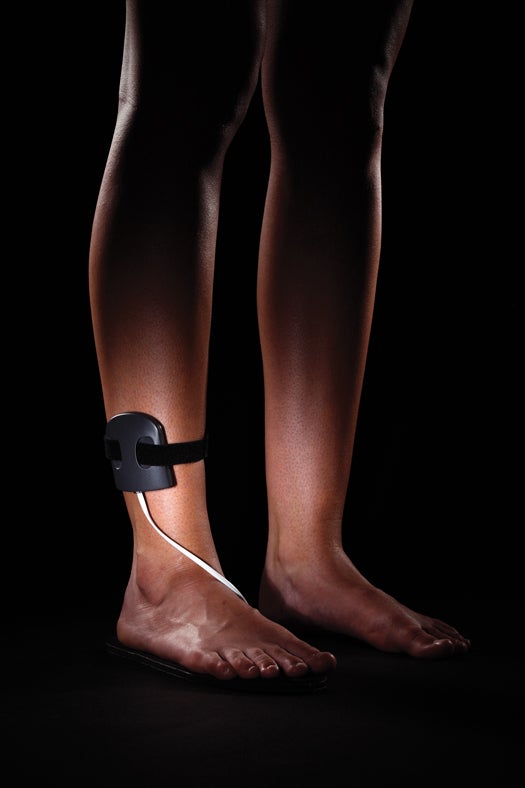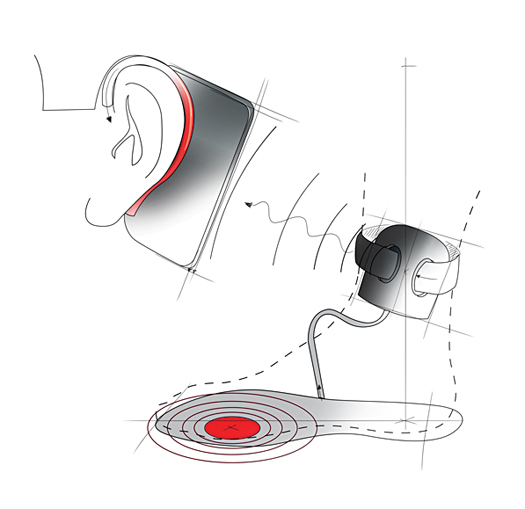2012 Invention Awards: An Assisted-Walking Device That Senses Your Step
An insole restores communication between the brain and injured feet

Long before he became an inventor, Jon Christiansen was a sea captain. In 1985 he was hired to sail a replica of the Godspeed, the ship that landed at Jamestown, Virginia, in 1607, in a reenactment of the original voyage. One day while he was cleaning the ship’s hull, someone spun the wheel, trapping Christiansen’s leg between the rudder and a support post. The accident severed or damaged most of the nerves below his left knee. Doctors told him he would never have feeling in his left foot again.
Christiansen had the strength to walk with a cane, but without feeling in his foot, he could not gauge when each step hit the ground without looking down. After a painful fall in 2003, he recruited two friends, engineers Richard Haselhurst and Steve Willens, to help him find a better way to get around. Willens came up with the idea of using tones to signal Christiansen’s brain when his feet touched the ground, and in 2006 the three built a prototype of Sensastep.
To use Sensastep, the patient wears a conductive foam insole embedded with 13 pressure sensors. As the heel or toe strikes the ground, a transmitter strapped to the ankle sends signals to a receiver that slips over the ear. The earpiece vibrates against the bone behind the ear, stimulating the cochlear nerve. Variations in the vibrations, which the patient perceives as audible tones, alert the brain to which part of the foot has contacted the ground. Christiansen and other patients don’t need to look down and watch every step they take to avoid falls.
Sensastep could help patients with sensory and motor-skill disabilities caused by diabetic neuropathy or Parkinson’s disease, as well as those with balance problems from strokes or injuries. Compared with other assisted-walking devices, it will be convenient: The insole fits in any shoe, and the ankle and earpiece charge like a cellphone. The inventors have also developed an app to track patients’ improvement.
Now they are looking for a medical-device company to license Sensastep. “We could go into production tomorrow,” Christiansen says. “My goal is to get it out there and help as many people as possible.”
Inventors: Jon Christiansen, Richard Haselhurst, Steve Willens
Invention: Sensastep
Cost to Develop: $200,000
Distance to Market: short ? ? ? ? ? long

Sensastep: How It Works
HOW IT WORKS
Sensors in an insole register a patient’s toe and heel strike and send that information to an ankle transmitter, which sends the data to an ear receiver. The earpiece vibrates against a bone behind the ear, transmitting a signal to the cochlear nerve that is registered by the brain.

The Other 2012 Invention Awards Winners Are…
- A Spring-Loaded Ice Skate
- A Mister for Firefighters
- A Modular Cast
- An Assisted-Walking Device With Senses
- A Recirculating Shower
- A Higher-Efficiency, Lower-Emission Engine System
- An Inflatable Tourniquet
- A Better Lobster Trap
- A Simple Helicopter Engine
- Augmented-Reality Contact Lenses
- Where Are They Now? Winners From Past Years